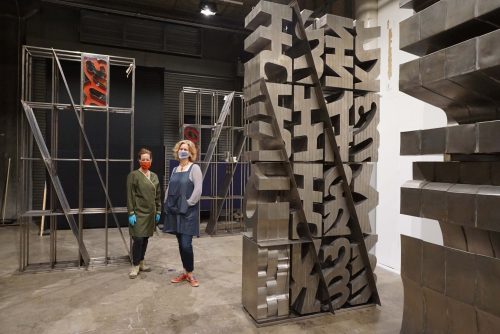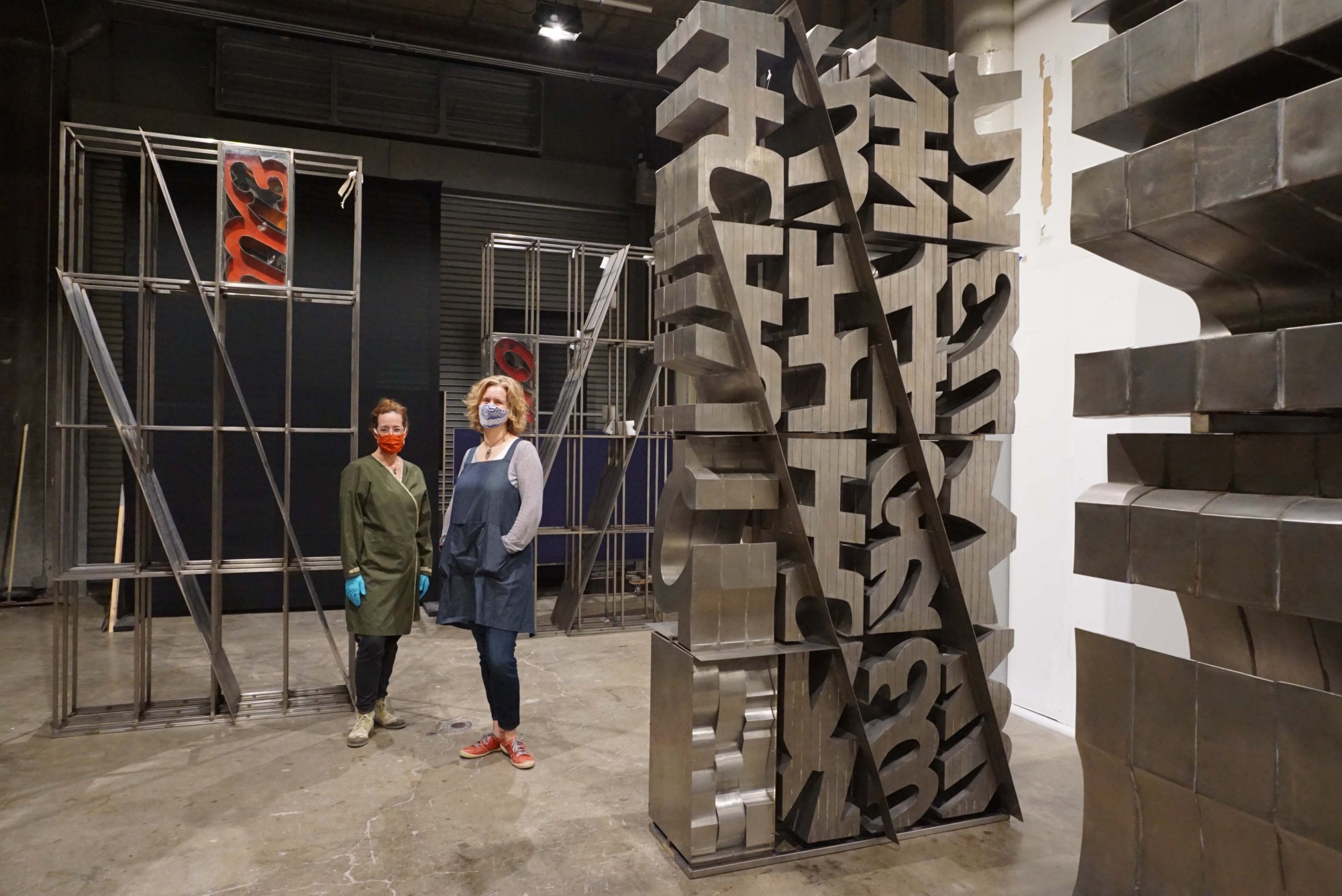Art Conservation: From Mummies to Hornets’ Nests

“Treated and mounted a six-foot-long taxidermy Monitor lizard, part of a modern art installation.”
“Rewrapp[ed] an Ancient Roman human mummy.”
Who would have these types of credentials on their resume? Art Conservators. In this case, the team at A.M. Art Conservation and The Found Object Art Conservation.
When most people hear the term “art conservation,” white gloves and a laboratory come to mind; others may think of workers revealing the vibrant colors of the Sistine Chapel ceiling behind centuries-old layers of soot.
According to Anne King of A.M. Art Conservation: “We often get lumped together with art restorers. Art conservation is actually a newish profession that branched away from restorers around the early to mid part of the 1900s.”
She explains: “Art conservation follows a different approach: rather than focusing solely on how an object looks – and trying to make it look new again – our aim is to preserve the historical, artistic and scientific integrity of a work.”
Surprisingly, there is a lot of scientific knowledge required. Conservators need to understand the science and technology behind all of the materials they are handling. As their work is generally to preserve objects for future generations, they need to know that not only will the repair materials last the test of time, but that those repairs can be reversed in the event that new techniques and understandings are adopted in the future.
Kerith Koss Schrager, Founder and Principal Conservator at The Found Object Art Conservation, adds: “Every object has a story and we are the caretakers that allow that story to be told. As conservators, we take that responsibility very seriously and understand that any of the choices we make may alter how that object is interpreted in the future.”
Schrager shares a studio space in ArtsWestchester’s White Plains building with the A.M. Art Conservation trio comprised of King, Rachael Arenstein and Eugenie Milroy. All four women are members of the American Institute for Conservation and have extensive experience at major international museums such as Metropolitan Museum of Art, American Museum of Natural History, Brooklyn Museum, Field Museum of Chicago, and more.
Object conservators treat, repair or stabilize, and preserve three-dimensional items, but they often focus on a specialty. For example, Schrager specializes in inorganic objects (ceramics, metals, glass). She is currently completing her Masters in Environmental Health and Safety while publishing, lecturing and advising collections caretakers on the health and safety concerns of hazardous collection materials (think of all that dust). Arenstein specializes in archaeological objects and preventive care (such as pest control, materials selection and environmental monitoring). Her business partners Milroy and King specialize in the treatment of organic objects (wood, plant materials, bone, ivory, feather, hair, fur, horn, taxidermy, etc.) Milroy has a particular interest in modern art and sculpture and King in indigenous artifacts.
“These are general descriptions of our specialties,” says King. “Our work overlaps considerably. Many artifacts have a combination of material types that require attention from more than one of us. That’s what makes us such a strong team. We can treat virtually any object.”
As far as favorite projects, “just from the top of [King’s] head,” the list holds some significant weight: “a bonded bronze sculpture by contemporary artist Michael Richards, a Civil War-era drum, historical Tibetan coins, indigenous artifacts from the Alan Stone collection, a Napoleonic era bone ship model made by prisoners of war, Dr. Seuss sculptures, historical jewelry…”
Just about anyone who has a valued item to be preserved is a potential client. This mostly means private owners or collectors, private companies with art collections, museums and galleries, historic homes, arts and culture foundations, outdoor sculpture gardens and insurance companies.
However, an object need not have monetary value to be worth the investment of conservation. For example, Westchester`s Stepping Stones Foundation, which manages the historic home of Bill and Lois Wilson in Katonah, asked A.M. Art Conservation to conserve a hornets’ nest. While not a rare object, they considered this to be an important piece in the preservation of the story of the Wilsons, who were the co-founders of Alcoholics Anonymous and Al-Anon Family Groups.
“The context of a work and how that interweaves with the culture it comes from takes equal place in our efforts,” says King. “In that respect, we are as much detectives as scientists. That’s a part of the job we all really enjoy.”
A version of this article first appeared in the June issue of ArtsNews, ArtsWestchester’s monthly publication. ArtsNews is distributed throughout Westchester County. A digital copy is also available at artsw.org/artsnews.

About ArtsWestchester
For more than 50 years, ArtsWestchester has been the community’s connection to the arts. Founded in 1965, it is the largest private not-for-profit arts council in New York State. Its mission is to create an equitable, inclusive, vibrant and sustainable Westchester County in which the arts are integral to and integrated into every facet of life. ArtsWestchester provides programs and services that enrich the lives of everyone in Westchester County. ArtsWestchester helps fund concerts, exhibitions and plays through grants; brings artists into schools and community centers; advocates for the arts; and builds audiences through diverse marketing initiatives. In 1998, ArtsWestchester purchased the nine-story neo-classical bank building at 31 Mamaroneck Avenue which has since been transformed into a multi-use resource for artists, cultural organizations and the community. A two-story gallery is located on the first floor of ArtsWestchester’s historic building on Mamaroneck Avenue. artsw.org

